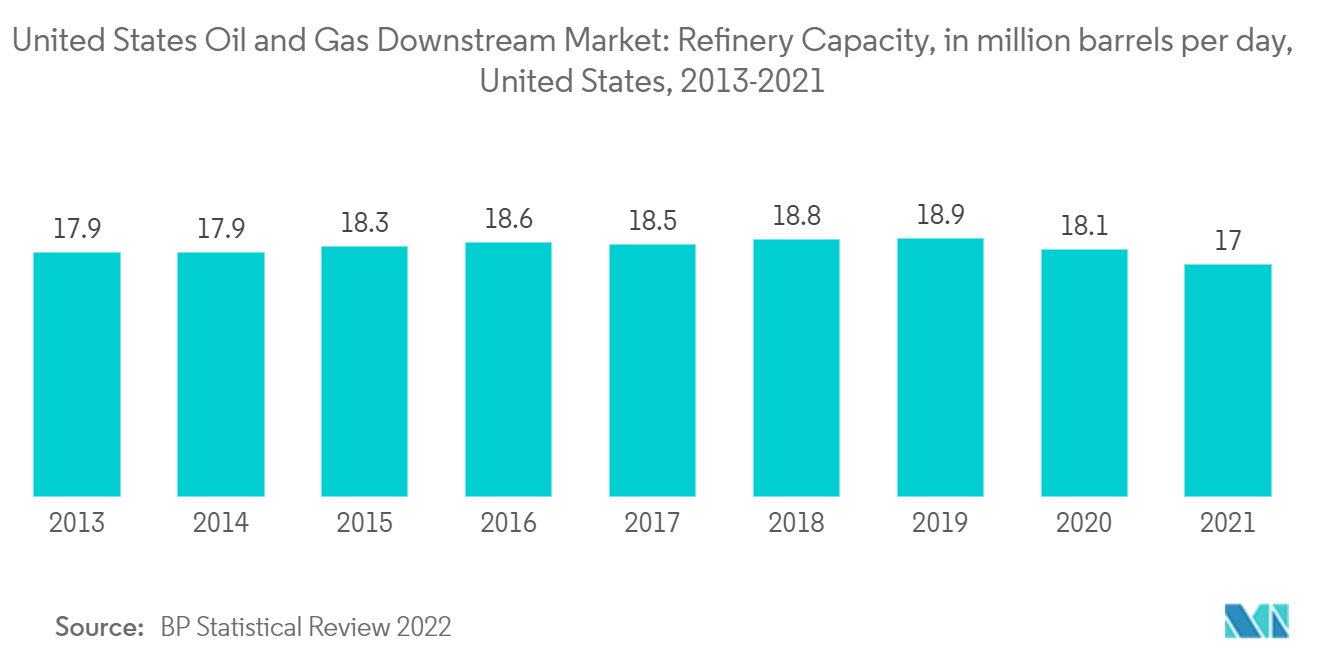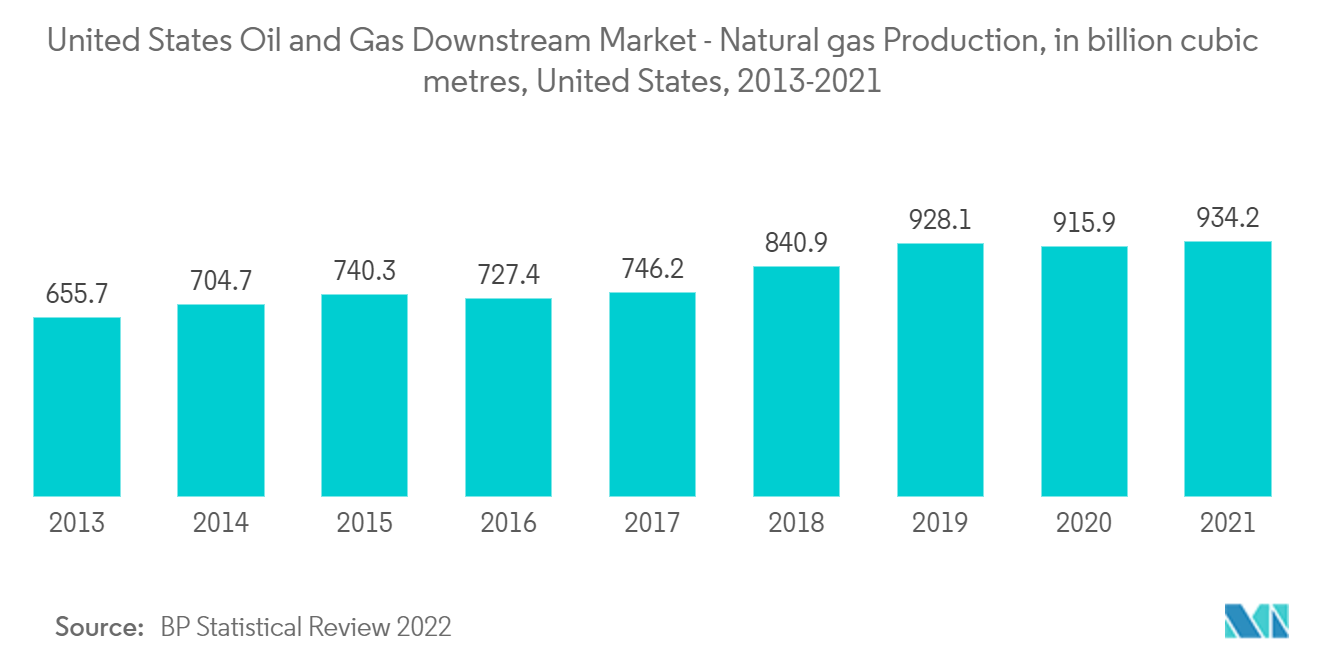Market Trends of United States Oil And Gas Downstream Industry
Refining Sector to Register a Modest Growth
- The United States has been witnessing growing energy demand in recent days. This growth in demand can be attributed to the growing population and an improvement in living standards in the developed states. Even though new and renewable energy sources are gaining popularity around the country, petroleum fuel remains a major energy source globally. This trend is expected to continue for the next few decades and benefit all sectors of the petroleum industry.
- Increasing industrial activity and economic growth are likely to support the refining industry. In developed states such as Massachusetts, Connecticut, and Minnesota, the demand for diesel and other distillates is expected to be robust in the coming years. This demand growth can be attributed to the strong refinery industry in these countries.
- The United States Gulf Coast region is expected to witness a fresh wave of investment in the downstream business during the forecast period. In addition, the United States' shale production has almost doubled since the shale revolution started and is expected to increase further.
- As of 2021, the refining capacity of the United States stood at 17 million barrels per day. With continuous investments and high competition, the refining throughput of the United States decreased at a rate of 1.1% in 2021.
- As of January 1, 2022, there were 130 operable petroleum refineries in the United States. The newest refinery in the United States is the Texas International Terminals 45,000 b/cd refinery in Channelview, Texas, which was operable on January 1, 2022, but actually started operating in February 2022.
- However, the newest refinery with significant downstream unit capacity is Marathon's facility in Garyville, Louisiana. This facility came online in 1977 with an initial atmospheric distillation unit capacity of 200,000 b/cd, and as of January 1, 2022, it had a capacity of 585,000 b/cd.
- Hence, increased production is expected to proliferate the growth of the US oil and gas refining market during the forecast period.

Increasing Demand for Petroleum Products
- Petroleum includes refined petroleum products, such as gasoline, diesel fuel, jet fuel, unfinished oils, and other liquids, such as fuel ethanol, blending components for gasoline, and other refinery inputs.
- The United States produces a large share of the petroleum it consumes, but the country still relies on imports to meet the increasing demand. Imports from other countries help to meet the domestic demand for petroleum. Moreover, natural gas production in the United States rose by 2.3% last year. Natural gas production was 934.2 billion cubic meters last year compared to the previous, which was 915.9 billion cubic meters.
- The US exported an average of roughly 6 million b/d of petroleum products in the first half of 2022 (January to June). US petroleum product exports increased by 11% (596,000 b/d) in the first half of 2022 as compared to the first half of 2021, marking the most remarkable growth rate since 2017. Most petroleum products, including distillate fuel oils and hydrocarbon gas liquids (HGLs) like propane, contributed to the development of exports.
- The aviation industry has become more efficient in recent decades, with the US airlines improving their fuel efficiency (on a revenue ton mile basis) by more than 135% between 1978 and 2021. Also, the vast majority of airline fuel used by US airlines is jet fuel, which is a kerosene-based fuel derived from petroleum. The price of jet fuel is greatly affected by the global price of crude oil. As of 2021, the cost of airline fuel reached USD 1.98 per gallon.
- Moreover, in May 2022, the Department of Transportation's Bureau of Transportation Statistics (BTS) released the March Fuel Cost and Consumption numbers of the US airlines, indicating that the US scheduled service airlines used 1.38 billion gallons of fuel, 20.3% more fuel than in February 2022 (1.14B gallons) and 9.8% less than in pre-pandemic days.
- Therefore, factors such as increasing demand for petroleum products and the improvement in downstream infrastructure are expected to drive the downstream market in the United States.

